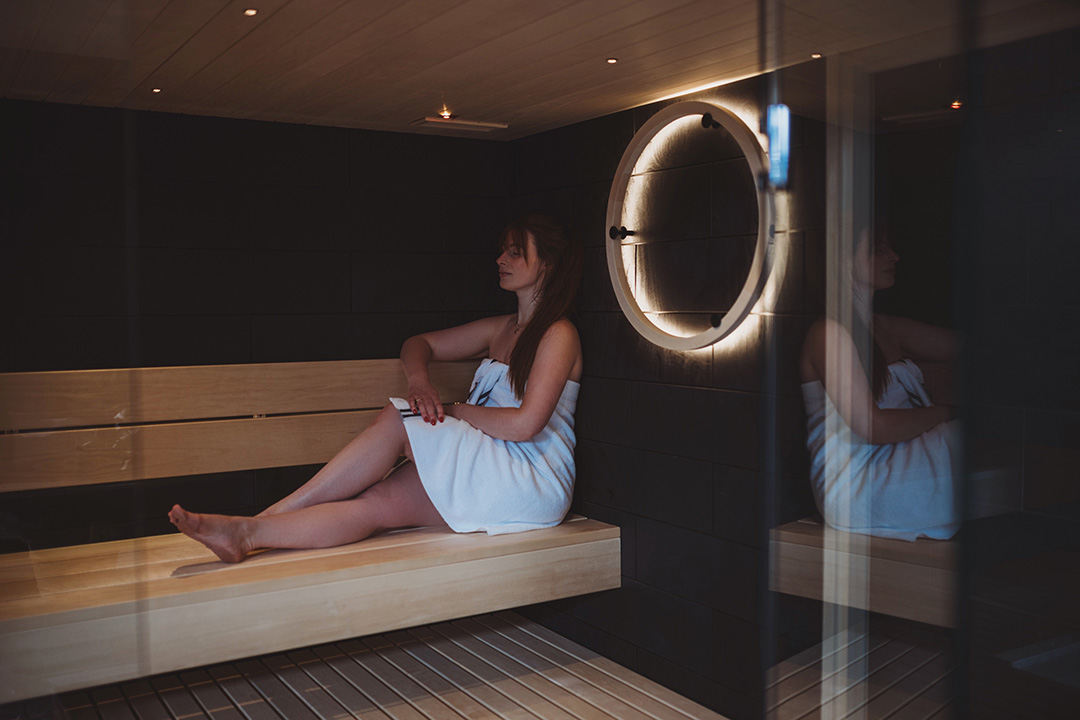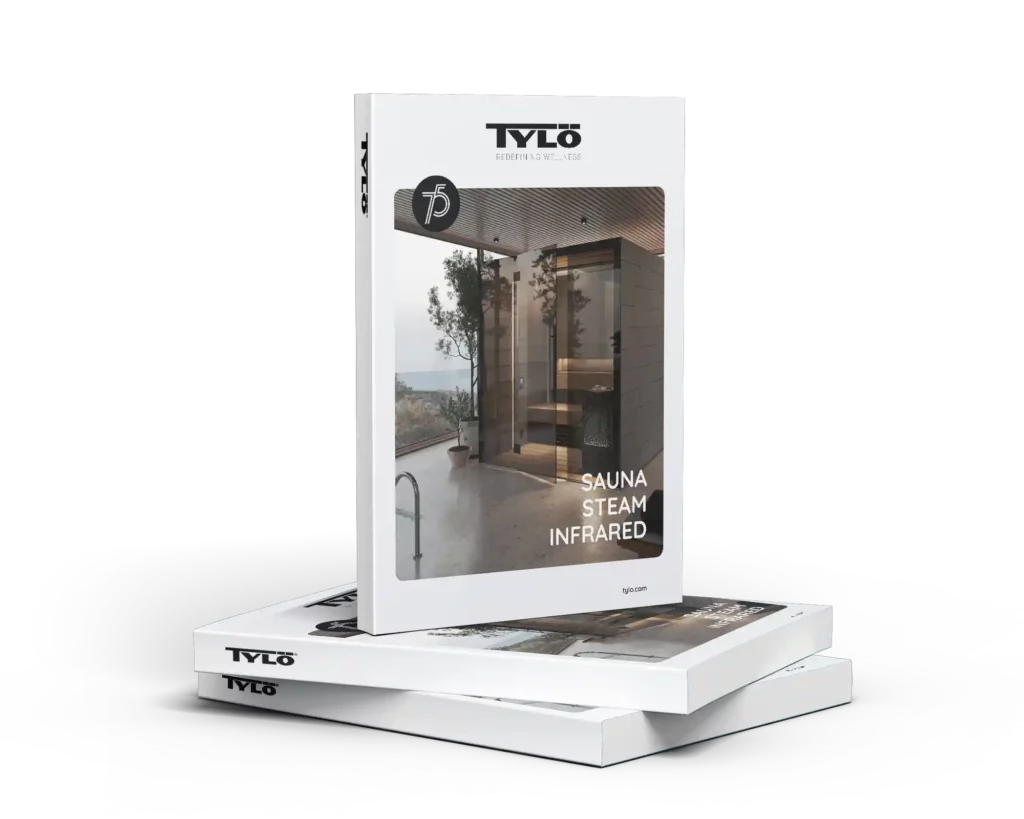
An Introduction to Sauna
Sauna can be a place to relax, a place to recover from the stresses of the day, and a place to improve your health and wellbeing.
The first saunas are thought to have been created thousands of years ago, by Stone Age communities digging pits and filling them with stones that had been heated on a fire. As time passed, the shape and appearance of the sauna evolved almost beyond all recognition — but the ethos behind the practice remained the same.
Over the years, sauna enthusiasts have come to associate the tradition with a variety of benefits for both physical and mental health. These include:
- Relieving stress
- Flushing out toxins
- Easing aches and pains
- Promoting cleaner and clearer skin
- Boosting cardiovascular health
- Strengthening immune system
- Improving sleep quality
- Burning fat
It’s worth noting that ‘sauna’ is one of few Finnish words to have entered the common English language. And in the same way, the traditions so beloved of Nordic countries have embedded their way firmly in the UK’s national culture.
Sauna or Steam?
When people are just starting out on their wellness journey, they are often unsure of the difference between sauna and steam. Put simply, a sauna utilises a strong, dry heat, while a steam room tends to be cooler and more humid. Typically, saunas reach between 70°C and 100°C with a humidity of between 20% and 30% — most of which comes from the water which is splashed on the stones. At the other end of the ‘sauna bathing’ spectrum is the steam room or steam shower, which tends to hover between between 40°C and 45°C and hit a humidity of almost 100%.
Soft sauna
At Tylö’ we’ve also pioneered the concept of ‘soft sauna,’ which sits in the middle in terms of humidity and heat. Offering a gentler experience that can be enjoyed for longer, it’s ideal for anyone struggling with sinus or respiratory issues — as well as younger or older people who may be sensitive to the high temperatures of traditional saunas.
Sauna Types
At Tylö we stock a range of saunas — use this guide to find out which type is right for you.
Swedish Sauna Bathing
The Swedish sauna, also known as a traditional sauna, is perhaps the most well-known and widely used type of sauna. Typically constructed using natural wood such as aspen, spruce, cedar or hemlock, it is heated by a wood-burning stove or electric heater.
In a Swedish sauna, which features low heat and high humidity, water is poured on heated rocks to create bursts of steam, known as löyly. There are normally upper benches where bathers can experience the highest temperatures as well as lower benches which offer a slightly cooler option.
Infrared sauna
Using infrared heaters to directly penetrate the body with radiant heat, these saunas warm bathers from the inside out. Operating at lower temperatures, typically between 40°C and 60°C, infrared saunas are known for their ability to promote optimum relaxation with minimal humidity – making them ideal for those who prefer a milder heat experience.
Steam room
Often found in gyms and spas, steam rooms are designed to offer high humidity along with moderate temperatures. Unlike saunas, which use dry heat, steam rooms produce moist heat by boiling water and distributing the resulting steam throughout the enclosed space. This type of sauna is excellent for relaxing muscles, opening pores, and promoting skin health.

Tylö catalogue
Sauna, steam, and infrared solutions that integrate seamlessly into your home.
With a huge passion for sauna and wellness, a solid foundation in traditional craftsmanship, and a wealth of industry knowledge, Tylö always strives to create the best possible products – changing our customers’ lives in the process. When you invest in our designs, you’re not just buying a sauna or steam room: you’re making an investment in your health and future.
Configure Your Tylö Sauna Online!
Introducing our Tylö 3D Sauna configurator.
Choose a preset design and get customising or start building your dream sauna from scratch.
Designing your Sauna
At Tylo we have everything you need to design the perfect sauna, whether you’re customising one of our modular designs or starting a bespoke build from scratch. Here are some of the things that you should take into consideration.
Basic elements
Picking the raw materials for your sauna is one of the most fun parts of the design process. Many people prefer to choose natural wood such as spruce, aspen, or alder, as these have appealing aesthetics and a pleasant aroma as well as the ability to withstand high temperatures and humidity. Today, many customers also opt for thermally modified wood, which boasts lower conductivity and a distinct, cosy scent.
Sauna ventilation
Ventilation is another crucial aspect of sauna design. Proper ventilation ensures that fresh air circulates efficiently, preventing the build-up of excess moisture and maintaining a comfortable sauna environment. Strategically placed vents and an adjustable air exchange system are also essential components.
Sauna layout
When planning the layout of your sauna, think about how you want the seating to be arranged. You’ll probably want a mix of upper and lower levels, designed to accommodate different levels of comfort – but this is your chance to get creative!
Sauna lighting
Although it may appear something of an afterthought, lighting has a huge part to play in the overall ambience of your sauna. Choose soft, warm-toned lighting to create a calming atmosphere, or subtle star lights for a magical effect. You can also select options that adapt depending on what time of day you are using the sauna.
Installing your Sauna
Whatever space you have available, the Tylö range will include a model that’s perfect for you. In fact, some of our smallest models have similar size requirements to that of your standard shower. And on the other end of the spectrum, we have spacious saunas designed to accommodate six or more bathers at any one time.
Your imagination is the only limit
Whether you want a sauna as part of a luxury bathroom, a home health-spa or gym, or an indoor swimming pool complex, we can help you design and build the perfect solution for your business or home. You can use glass doors to make the most of panoramic views, or create a snug, built-in space at the very heart of your home. The possibilities are endless.
Things to consider
The average family-sized sauna measures approximately 1.5 metres x 1.8 metres and a little over 2 metres in height. Any smaller, and bathers might not have enough space to spread out and relax. Any higher, and hot air would begin to pool around the ceiling out of reach of the benches below.
Please note that all sauna doors are designed to open outwards. As well as making the most of a limited space, this feature is also an important safety measure.
Sauna Accessories
Finally, take some time to consider our range of sauna accessories, designed to enhance your experience.
From practical products such as thermometers and hygrometers to wooden buckets and ladles, timers, fragrances and more, there’s lots to choose from. We also supply a range of technical additions, from mood lighting to Bluetooth speakers and more.
Sauna Etiquette
The quiet calm and the soothing heat of a sauna are designed to help you relax – but if you or your friends are unsure about how to behave, that relaxed frame of mind and body can be difficult to achieve.
Public saunas will usually have a set of rules or guidelines posted up so that all the bathers know what is expected of them and what to expect.
Of course, if you have your own sauna, then you can make up your own rules. Generally speaking, people in the UK wear swimsuits in saunas, keeping their modesty intact. But on the continent, it is far more common to sauna naked. In fact, many Europeans consider it poor hygiene to wear fabrics in the sauna. If you choose to go without a swimsuit, remember to take a towel to sit on.
It’s also important to remember to move quickly when entering or exiting the sauna, to minimise the chances of releasing precious hot air. And even while enjoying a sauna with friends, ensure that you give everyone enough personal space to relax and be comfortable.
Sauna Costs
The history of Tylö began with a desire to design and build a more efficient sauna heater and so it is no surprise that the modern range of Tylö saunas are amongst the most efficient and economical to run on the market. The size of the heater will vary according to the size of your sauna, but the average family sauna runs a heater that is 6Kw.
The average family sauna with a 6Kw heater will take around one hour to get to the right temperature. Taking standard costs into account, that should cost somewhere in the region of £1.50. After that, it will cost a little less than that every hour to maintain the heat – depending on how many times you open and close the door. In other words, it could cost as little as £2 in energy to prepare and enjoy a sauna in your own home.
Looking for information? Searching for answers to a specific question?
Connect with our network of dealers across the country to learn more about saunas and whether they could be the right choice for you. Our network covers the country from South Devon to Highlands / Scotland.
We look forward to hearing from you and helping you to choose your perfect sauna.
Please call us direct on 01271 378 100 or use the contact form below.
